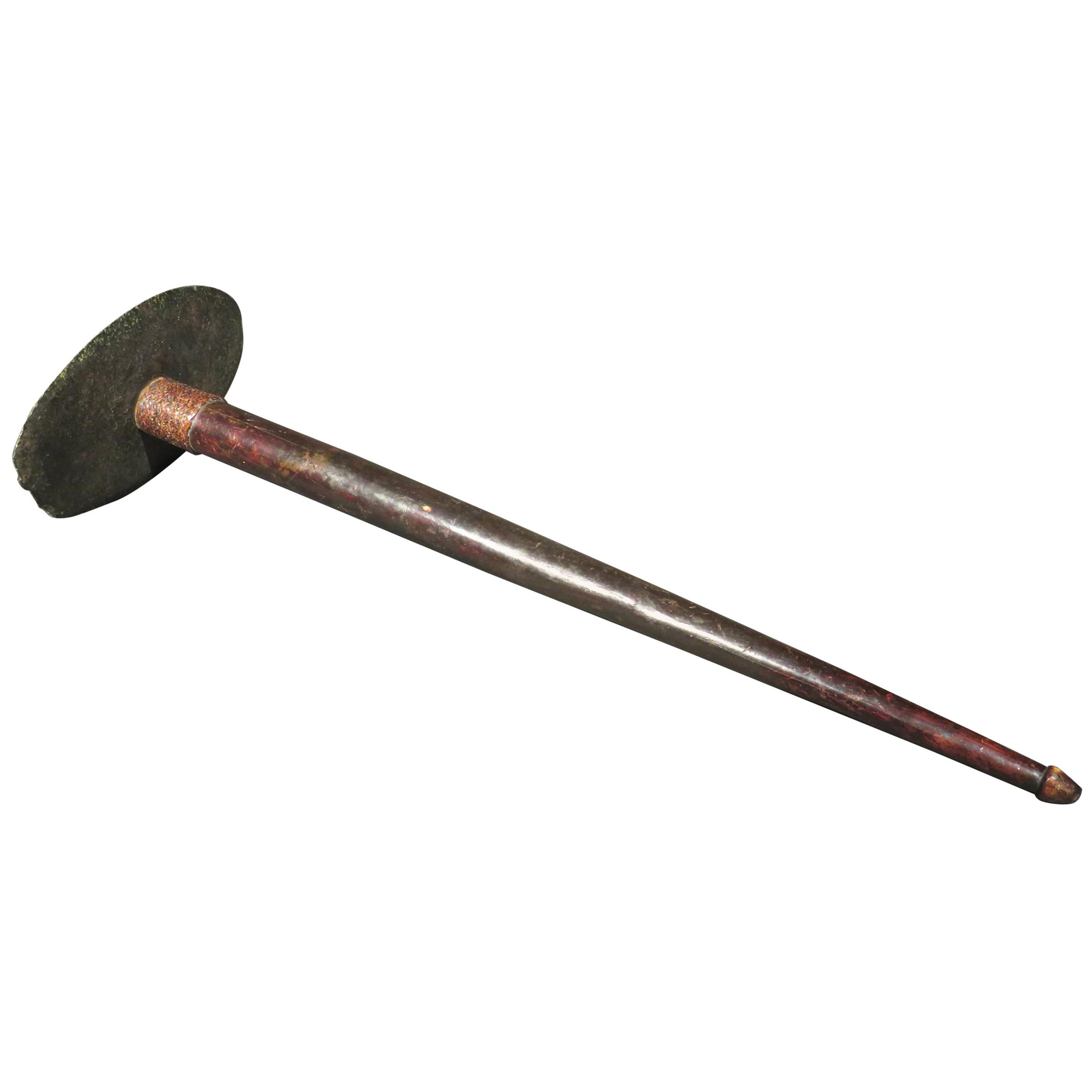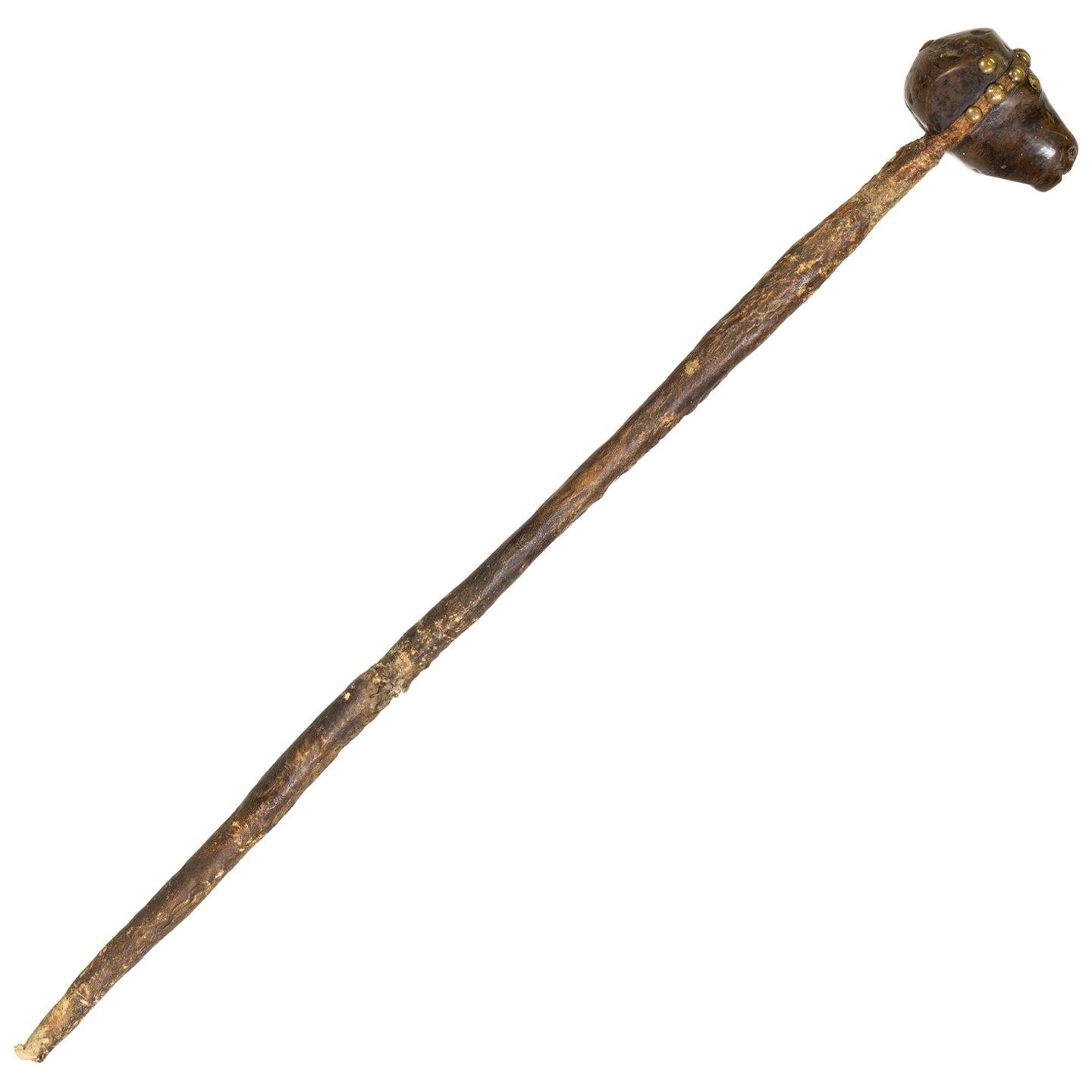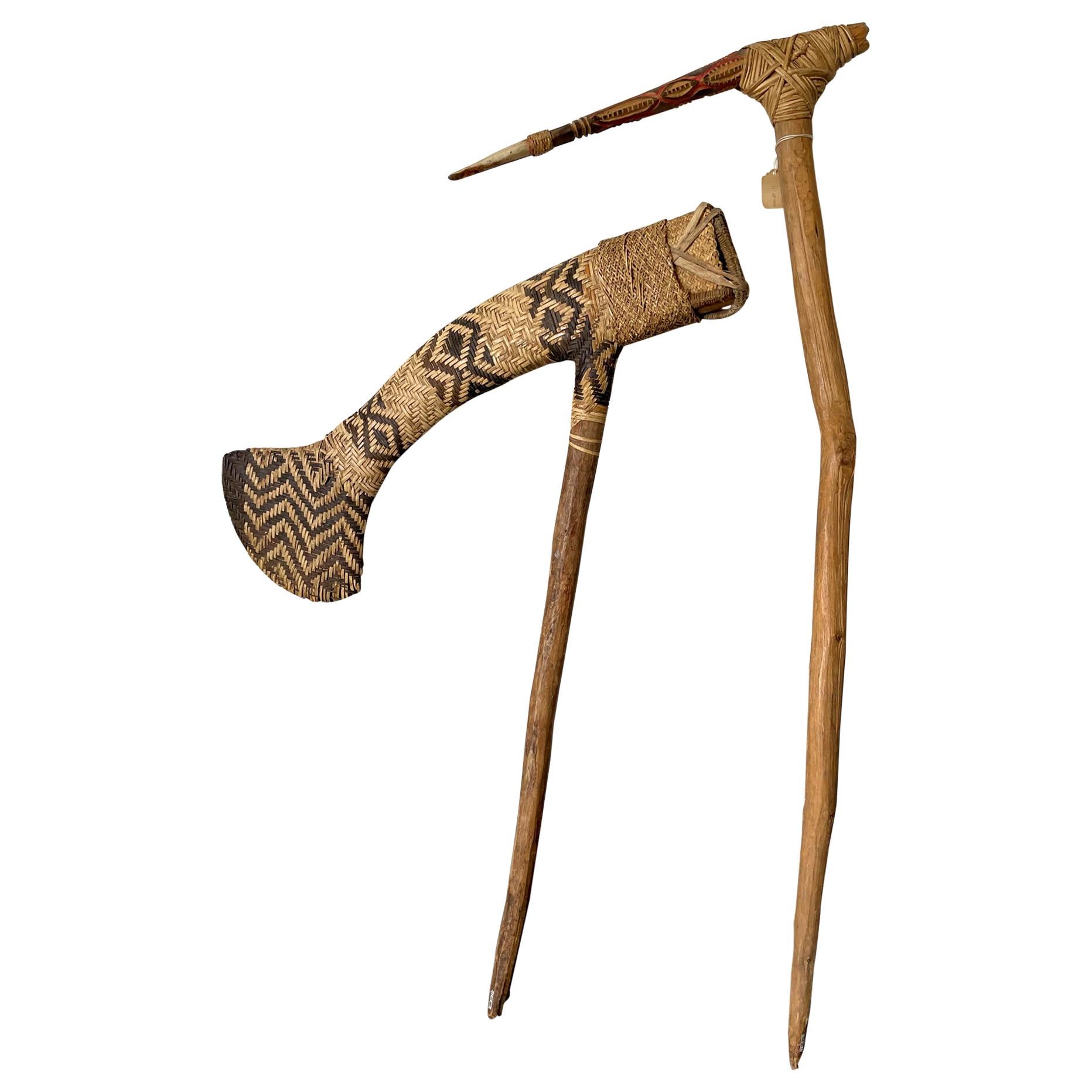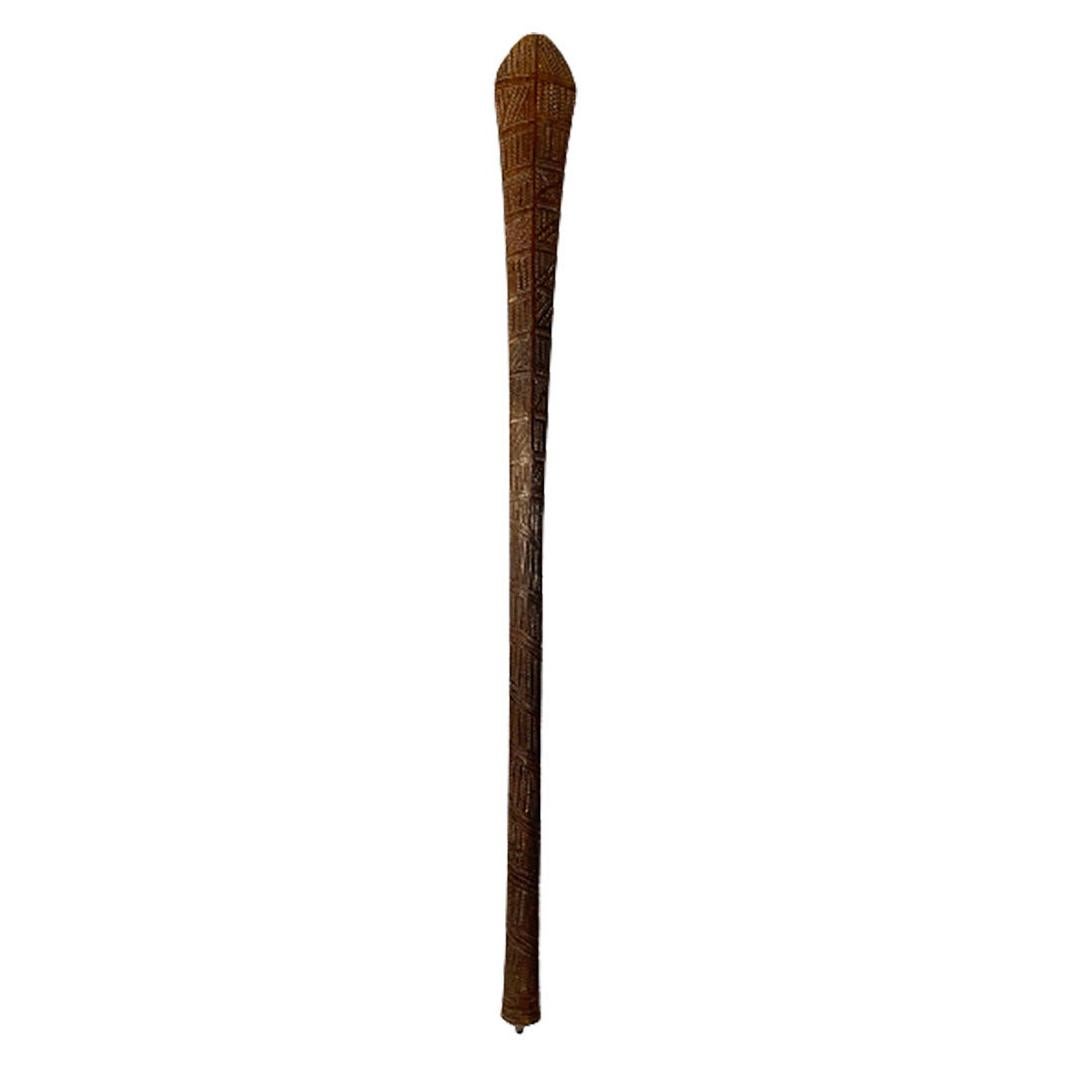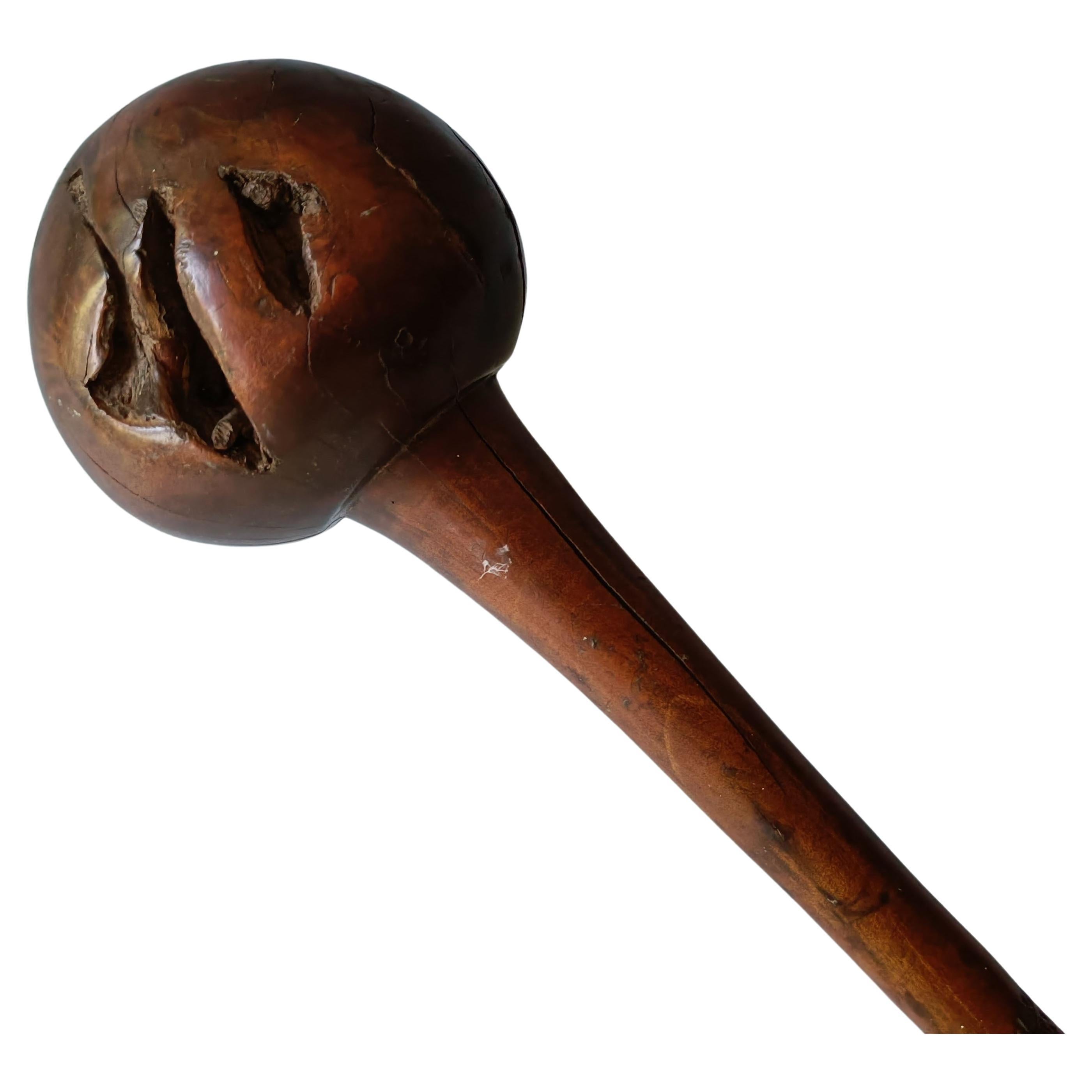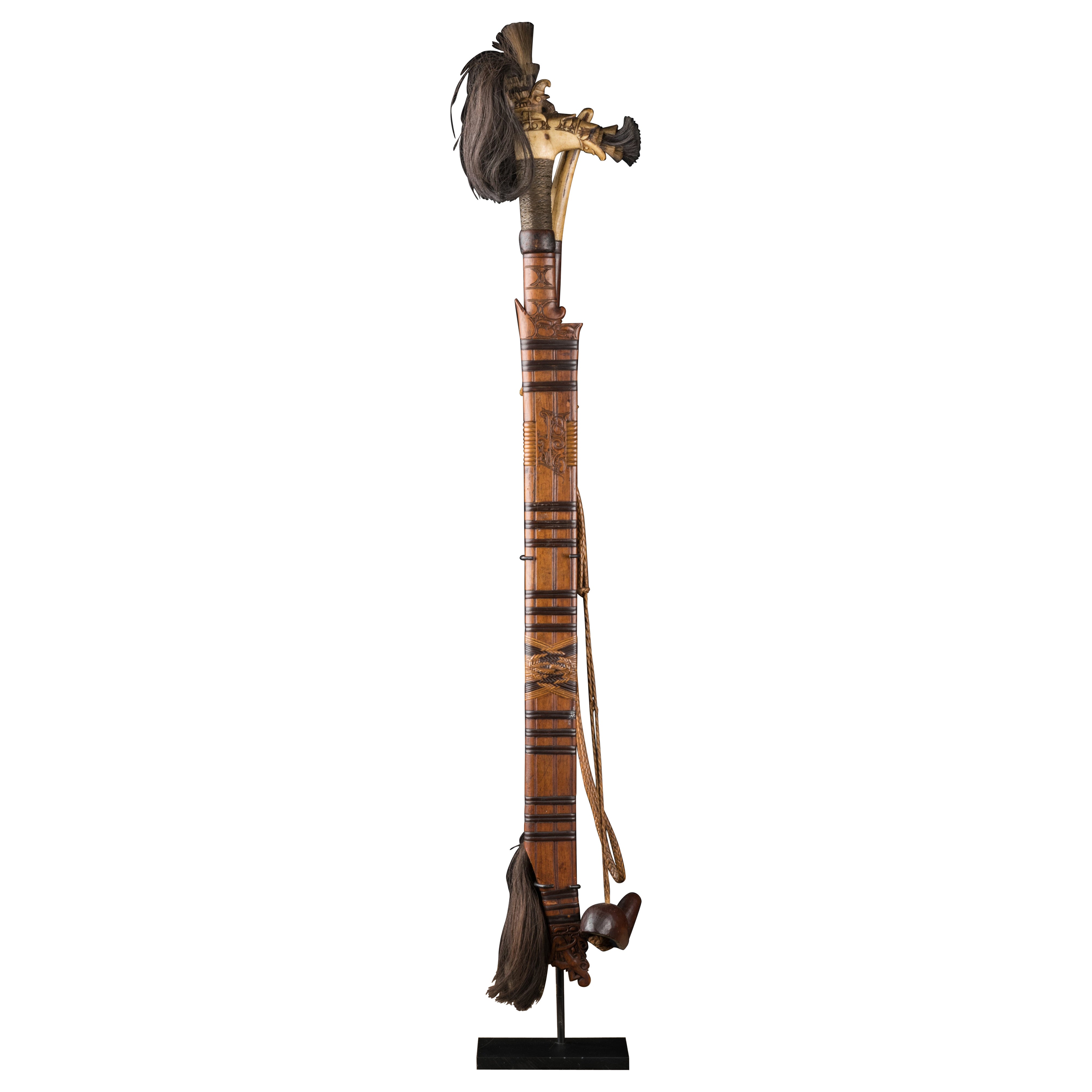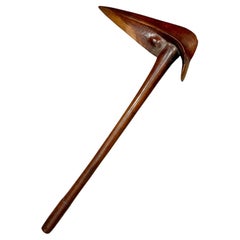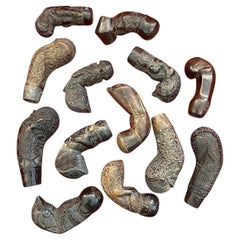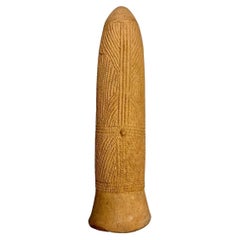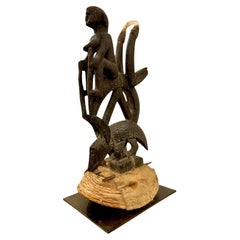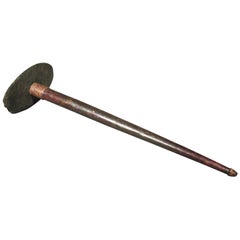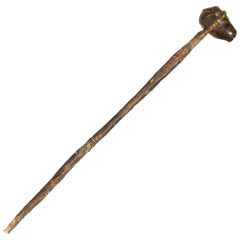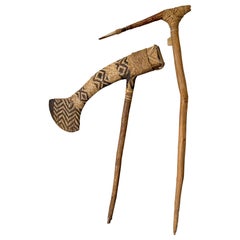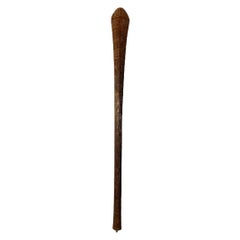Items Similar to 19th Century Kukukuku Club from Highlands Papua
Want more images or videos?
Request additional images or videos from the seller
1 of 7
19th Century Kukukuku Club from Highlands Papua
$1,437.77
£1,070.13
€1,200
CA$1,969.39
A$2,190.39
CHF 1,143.75
MX$26,654.72
NOK 14,607.48
SEK 13,699.24
DKK 9,135.18
Shipping
Retrieving quote...The 1stDibs Promise:
Authenticity Guarantee,
Money-Back Guarantee,
24-Hour Cancellation
About the Item
This rare antique Kukukuku (pronounced "cookah-cookah") war club is from the remote highlands of Papua New Guinea. It features a head made of stone in the characteristic 'pineapple' shape.
These clubs are the most common type of club found in Papua New Guinea They come from throughout much of the country.
The war clubs have a variety of different shaped stone heads and it is often the shape of the head that determines the value. Complex pineapple-shaped club heads are generally better than disk or ball-shaped stones.
- Dimensions:Height: 27.56 in (70 cm)Diameter: 3.94 in (10 cm)
- Style:Tribal (In the Style Of)
- Materials and Techniques:
- Place of Origin:
- Period:
- Date of Manufacture:19th Century
- Condition:Wear consistent with age and use.
- Seller Location:NICE, FR
- Reference Number:1stDibs: LU9202238960212
About the Seller
5.0
Gold Seller
Premium sellers maintaining a 4.3+ rating and 24-hour response times
Established in 2003
1stDibs seller since 2023
28 sales on 1stDibs
Typical response time: 5 hours
- ShippingRetrieving quote...Shipping from: NICE, France
- Return Policy
Authenticity Guarantee
In the unlikely event there’s an issue with an item’s authenticity, contact us within 1 year for a full refund. DetailsMoney-Back Guarantee
If your item is not as described, is damaged in transit, or does not arrive, contact us within 7 days for a full refund. Details24-Hour Cancellation
You have a 24-hour grace period in which to reconsider your purchase, with no questions asked.Vetted Professional Sellers
Our world-class sellers must adhere to strict standards for service and quality, maintaining the integrity of our listings.Price-Match Guarantee
If you find that a seller listed the same item for a lower price elsewhere, we’ll match it.Trusted Global Delivery
Our best-in-class carrier network provides specialized shipping options worldwide, including custom delivery.More From This Seller
View AllRare Kanak "kagu" Wooden Bird Beak Puzzle, New Caledonia, 19th Century
Located in NICE, FR
Rare Kanak war club of the "Kagu" type (Bird's beak) in hardwood, from New Caledonia, Melanesia, 19th century.
This is an exceptional Kanak art collector's item due to its imposing ...
Category
Antique Mid-19th Century New Caledonian Tribal Art
Materials
Wood
Collection of Kriss Handles, Java, Indonesia, Late 18th / Early 19th Century
Located in NICE, FR
A set of thirteen kriss handles originating from Java, Indonesia, dating from the late 18th to early 19th century.
Beautiful aged patina in dark or amber tones. Exquisite carving wo...
Category
Antique 1790s Indonesian Tribal Tribal Art
Materials
Wood
16th Century Ceremonial Urn from Burkina Faso, Africa
Located in NICE, FR
Beautiful funerary terracotta urn called from the Bura region (Niger) in West Africa. This cylindrical anthropomorphic sculpture is adorned with geometric designs. It depicts a human...
Category
Antique 16th Century Burkinabe Tribal Urns
Materials
Terracotta
Ciwara Bambara headdress in carved wood and basketry, Mali, Early 20th century
Located in NICE, FR
A very pleasing Ciwara crest, singularly small and accompanied by its original headdress, depicting a stylized antelope leaning on a pangolin. The antelope is ridden by a woman, and white horsehair has been added to the tips of the horns. The piece is carefully sculpted, with notches decorating the bodies of the antelope and the pangolin.
Rattan, plant fiber, cowries, wood Very fine velvety mat patina, Circa 1950
An animal called Ciwara is said to have taught the Bambara how to cultivate the land, and during agrarian ceremonies, they recall the myth through the stylized representation of an antelope whose name ci wara...
Category
Early 20th Century Malian Tribal Tribal Art
Materials
Wood
Shell Plaque (Barava) from Solomon Islands, 19th Century
Located in NICE, FR
Objects crafted from the shell of the giant Tridacna clam, also known as the fossilized giant clam, held great value among numerous Melanesian peoples. The artistry of working with f...
Category
Antique 19th Century Solomon Islands Tribal Tribal Art
Materials
Shell
Bamana N'tomo mask, Mali, 20th century
Located in NICE, FR
Bamana N'tomo mask, Mali, 20th century
"Generally surmounted by three to eight horns forming a comb, the N'tomoface mask refers to a moment of compulsory education given to uncircumcised young boys in certain West African societies. The mask's discreet, even absent, mouth emphasizes the behavior expected of them in their future adult life after training: controlling and measuring their words, knowing how to keep quiet, preserving secrets and enduring pain in silence."
Excerpt from Masques du N'tomo, Marc Ladreit de Lacharrière Collection, Musée du Quai Branly Jacques Chirac, France.
The Bambara, or Bamana, live in central and southern Mali. Their name means “unbeliever” and was given to them by the Muslims. Animists, they believe in the existence of a creator god called Ngala, who maintains the order of the universe and coexists with another androgynous god called Faro, master of the Word, who gave all qualities to mankind and makes the fruits of the earth grow. Traditional Bamana art objects are closely linked to agrarian rites.
The Bamana dance these masks during initiation and circumcision ceremonies for young boys in the Ntomo society. The face, with its vertical outgrowths at the top, adopts geometric features beneath a rounded forehead, including an imposing busted nose, as the Bamana favor this organ in their statuary as it evokes sociability and clan cohesion. Indeed, during choreography, the dancer frequently touches the nose of the mask.
As teaching aids for candidates, masks from societies accessible to young boys and adults, such as the N'tomo, Korè and Ci wara...
Category
Vintage 1930s Malian Tribal Tribal Art
Materials
Wood
You May Also Like
A Rare Papua New Guinea Kukukuku War Club, Eastern Highlands - Morobe Province
Located in Ottawa, Ontario
This rare antique Kukukuku (pronounced "cookah-cookah") war club originates from the Morobe Province, which is a very remote area located within the Eastern Highlands of Papua New Gu...
Category
Early 20th Century Papua New Guinean Tribal Arms, Armor and Weapons
Materials
Stone
19th Century Northern Plains War Club
Located in Coeur d'Alene, ID
Northern Plains war club with stylized stone buffalo head. Raw hide wrapped adorned with brass tacks. Much patina from use, blood, grease and sweat. Mu...
Category
Antique Mid-19th Century American Native American Native American Objects
Materials
Other
Two Ceremonial Weapon from Highlands of Papua New Guinea Provenance
Located in Atlanta, GA
Two Oceanic ceremonial weapons from PNG highlands circa 20th century. It consists of two pieces. The first is an ax with a wood shaft and a flat elongated he...
Category
Mid-20th Century Papua New Guinean Tribal Tribal Art
Materials
Rattan, Wood
Tonga Pakipaki War Club, Polynesia, 18th Century
Located in Delft, NL
A Tonga Pakipaki war club, Polynesia, 18th century
An exceptional ironwood war club originating from Tonga, Polynesia. 18th century and hand carved with complex geometric patterns running the length of the shaft.
4 human and 1 botanical glyphs and a extra carving, see details in picture 2
The Tongan war club...
Category
Antique 18th Century Polynesian Tribal Art
Materials
Wood
Fiji Ula Club Polynesian war club Tribal Oceanic Antiques
Located in London, GB
Fiji Ula Club Polynesian war club Tribal Oceanic
A good antique Fiji Ula throwing club
With naturally occurring root fissures on the ball head
Good condition with minor age cra...
Category
Antique 19th Century Fijian Tribal Art
Materials
Hardwood
Traditional Tribal Mandau (Parang Ilang) Sword – Dayak People, Borneo
Located in Leuven , BE
Traditional Tribal Mandau (Parang Ilang) Sword – Dayak People, Borneo
The Mandau is a traditional sword of the Dayak people of Borneo, revered both as a cultural artifact and a weap...
Category
Early 20th Century Indonesian Antiquities
Materials
Metal
More Ways To Browse
Antique Stone Head
Used Country Club Furniture
Ball Headed Club
New Guinea War Clubs
Antique Leather Helmet
Antique Scabbard
Brass Daggers
Iron Cannon
19th Century Pistols
Antique Firemans
17th Century Cannons
Antique Powder Horn
Antique Powder Horns
Edo Period Japanese Armor
Katana Sword
Scottish Regiment
Antique Powder Flasks
Embossed Armour
